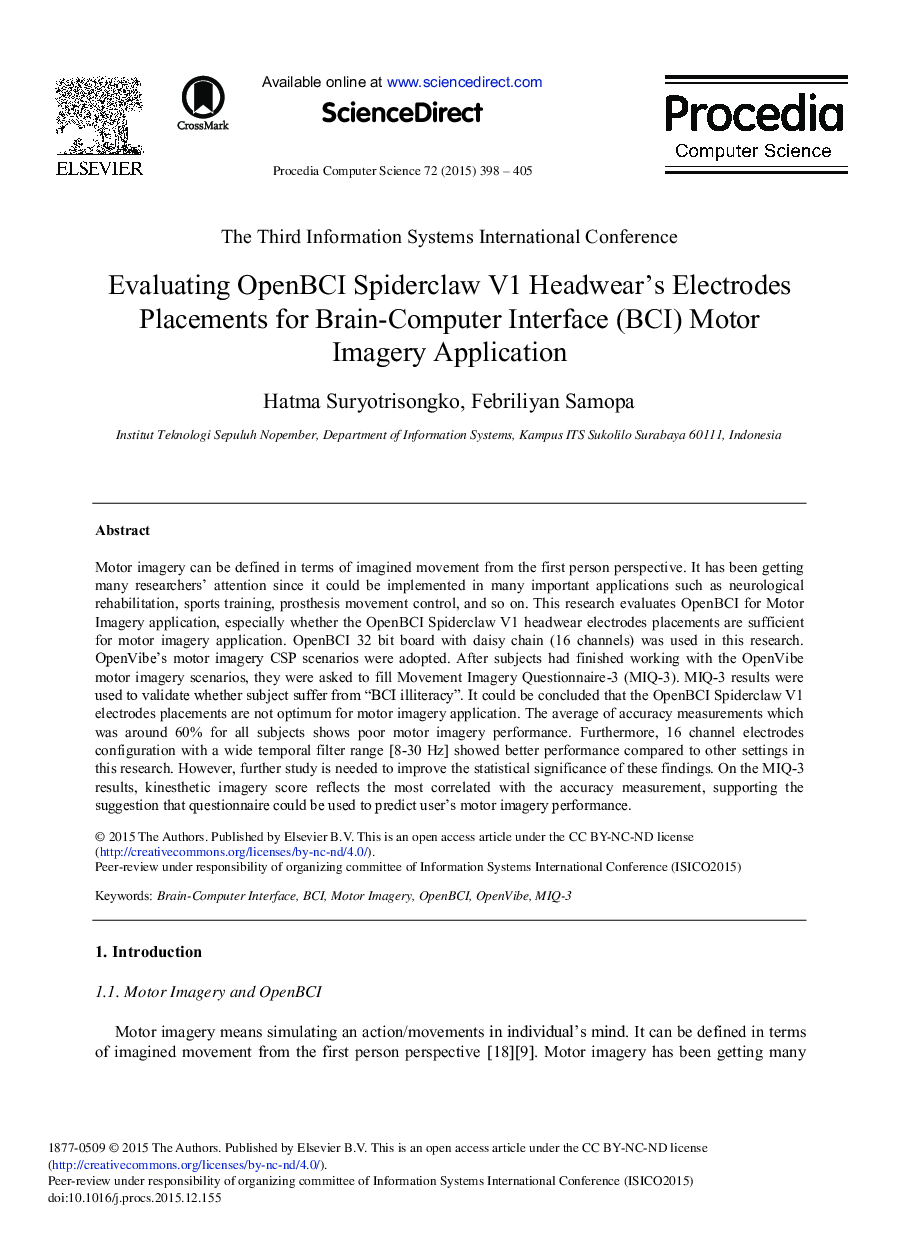| کد مقاله | کد نشریه | سال انتشار | مقاله انگلیسی | نسخه تمام متن |
|---|---|---|---|---|
| 487146 | 703548 | 2015 | 8 صفحه PDF | دانلود رایگان |

Motor imagery can be defined in terms of imagined movement from the first person perspective. It has been getting many researchers’ attention since it could be implemented in many important applications such as neurological rehabilitation, sports training, prosthesis movement control, and so on. This research evaluates OpenBCI for Motor Imagery application, especially whether the OpenBCI Spiderclaw V1 headwear electrodes placements are sufficient for motor imagery application. OpenBCI 32 bit board with daisy chain (16 channels) was used in this research. OpenVibe's motor imagery CSP scenarios were adopted. After subjects had finished working with the OpenVibe motor imagery scenarios, they were asked to fill Movement Imagery Questionnaire-3 (MIQ-3). MIQ-3 results were used to validate whether subject suffer from “BCI illiteracy”. It could be concluded that the OpenBCI Spiderclaw V1 electrodes placements are not optimum for motor imagery application. The average of accuracy measurements which was around 60% for all subjects shows poor motor imagery performance. Furthermore, 16 channel electrodes configuration with a wide temporal filter range [8-30 Hz] showed better performance compared to other settings in this research. However, further study is needed to improve the statistical significance of these findings. On the MIQ-3 results, kinesthetic imagery score reflects the most correlated with the accuracy measurement, supporting the suggestion that questionnaire could be used to predict user's motor imagery performance.
Journal: Procedia Computer Science - Volume 72, 2015, Pages 398-405